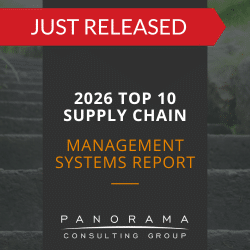Key Takeaways
- The business value of AI agents is becoming evident as organizations use them to streamline finance, supply chain, customer service, and compliance functions.
- AI agents in business are gaining traction because they act on real-time data and reduce the need for manual intervention in high-volume, rules-based processes.
- The most significant AI agent implementation challenges arise from data quality, governance, and the balance between autonomy and human oversight.
AI agents are entering the enterprise faster than expected—and with far more autonomy than many leaders are comfortable with.
We’re no longer talking about tools that summarize documents or assist with writing. We’re talking about agents that act: they propose financial entries, reschedule shipments, flag HR compliance issues, trigger downstream system events, and even coordinate other agents.
AI agents in business can adapt based on live conditions and initiate actions without needing human sign-off (although in most enterprise settings, those actions are reviewed or approved before execution).
It’s no surprise that many of these AI agents raise alarms, especially when they operate inside core financial, operational, or customer-facing systems. But here’s what we’re seeing across industries: when deployed with rigor, many of these dangerous-looking agents are actually generating real business value.
Below, we break down four types of AI agents that tend to look risky but can be powerful operational assets when implemented with the right guardrails.
The 2026 Top 10 ERP Systems Report
What vendors are you considering for your ERP implementation? This list is a helpful starting point.
1. Autonomous Finance Reconciliation Agents
These agents scan incoming financial data—POs, invoices, payments, and GL entries—and can propose or flag reconciliations that reduce manual effort. Many retail and manufacturing companies are piloting these agents inside shared services environments or corporate finance centers.
How they create business value:
The business value of AI agents in this context is faster month-end close, fewer manual touchpoints, and better audit trails.
For example, a mid-sized distribution company might reduce its close cycle after implementing a reconciliation agent across its AP and AR teams.
Why they look dangerous:
Leaders often picture what could happen if agents posted entries directly to the ledger without oversight. Even in recommend-only mode, the perception of ceding control over financial records raises concerns.
What it takes to implement safely:
- IT Recommendation: Run the agent in “recommend-only” mode for 1–2 closing cycles. In fact, in many enterprise deployments, “recommend-only” or “human-in-the-loop” models are the norm, especially in finance or compliance-critical functions.
- Business Recommendation: Our AI Readiness consultants typically advise clients to establish clear ownership for review and sign-off, so finance leaders remain accountable for all final entries.
2. Supply Chain Exception Agents
Many manufacturing and CPG companies use these agents in materials planning and logistics functions, especially where ERP and supply chain management systems are already integrated.
How they create business value:
In this case, the business value of AI agents comes from cycle time compression. Instead of requiring human intervention for every exception, agents can act on predefined patterns—freeing up planners for strategic decisions.
For example, a global food producer might configure its agent to automatically re-sequence shipments when carrier ETAs slip. This would help avoid downstream stockouts at regional distribution centers.
Why they look dangerous:
They look dangerous because the corrective actions they recommend—rerouting freight, substituting vendors, rescheduling production—carry high operational consequences if executed incorrectly. Even when recommendations require approval, the speed and scope of their proposals can feel unsettling to planners.
What it takes to implement safely:
- IT Recommendation: Define “safe zones” of autonomy (e.g., rerouting within zones, vendor selection within contracted lists).
- Business Recommendation: Ensure supply chain data is accurate, current, and governed enterprise-wide, since the effectiveness of these agents depends on the quality of forecasts, inventory records, and supplier updates.
3. Customer Service Resolution Agents
We’re seeing adoption of these types of agents accelerate in telecom, financial services, and eCommerce—industries where high-volume, rules-based support dominates. Agents work alongside CRM platforms, pulling from product knowledge bases, past tickets, and account history.
How they create business value:
The business value of AI agents in customer service lies in deflection and resolution time. By resolving Tier 1 cases before they hit a human agent, teams can reduce wait times and decrease cost-to-serve.
For example, a financial services company might train an AI agent to handle card issues, like lost card reports and duplicate charges. If implemented successfully the agent might be able to resolve the majority of cases without needing a human rep. This would free up the team to focus on more complex support calls.
Why they look dangerous:
These agents are customer-facing, which means they impact brand reputation. Executives worry that poorly framed responses or inappropriate credits could damage customer trust, even when human reps remain in the loop.
What it takes to implement safely:
- IT Recommendation: Require agent outputs to include a confidence score and traceable rationale.
- Business Recommendation: Our AI Readiness consulting team typically advises clients to define clear customer experience goals and success metrics before deployment, so the agent’s performance is measured against business outcomes.
4. Policy Enforcement and Compliance Agents
Many healthcare and financial services firms have begun exploring these types of agents inside regulatory workflows. Think HIPAA, SOX, PCI-DSS—domains where violations carry enterprise risk.
How they create business value:
The main benefit is early detection. Rather than relying on after-the-fact audits, AI agents in policy enforcement scenarios can identify violations as they happen.
For instance, a regional health system might use an agent to flag unusual access patterns in patient records—helping identify internal misuse before it escalates.
Why they look dangerous:
They appear risky because of the types of actions they’re capable of—suspending access, freezing transactions, and triggering compliance alerts. In reality, most enterprises restrict them to flagging and escalation, but the mere potential for overreach can make leadership uneasy.
What it takes to implement safely:
- IT Recommendation: Conduct regular bias testing and false-positive testing. (The AI agent implementation challenge here is balancing detection sensitivity with organizational trust. Over-flagging erodes credibility.)
- Business Recommendation: Secure executive sponsorship from legal and compliance before any deployment. This helps ensure escalation paths, accountability measures, and policy interpretations are aligned across the enterprise.
Learn More About AI Agents in Business
When thoughtfully implemented, AI agents can deliver real operational leverage. They reduce time-to-action, elevate human teams, and surface risks before they compound.
AI agent success comes down to structure. Governance, boundaries, lifecycle management, and stakeholder alignment must all be designed from the start.
If your leadership team is exploring AI agents in business-critical environments, our independent software consultants can help you conduct a technology-agnostic evaluation of both ERP-native and third-party options.














